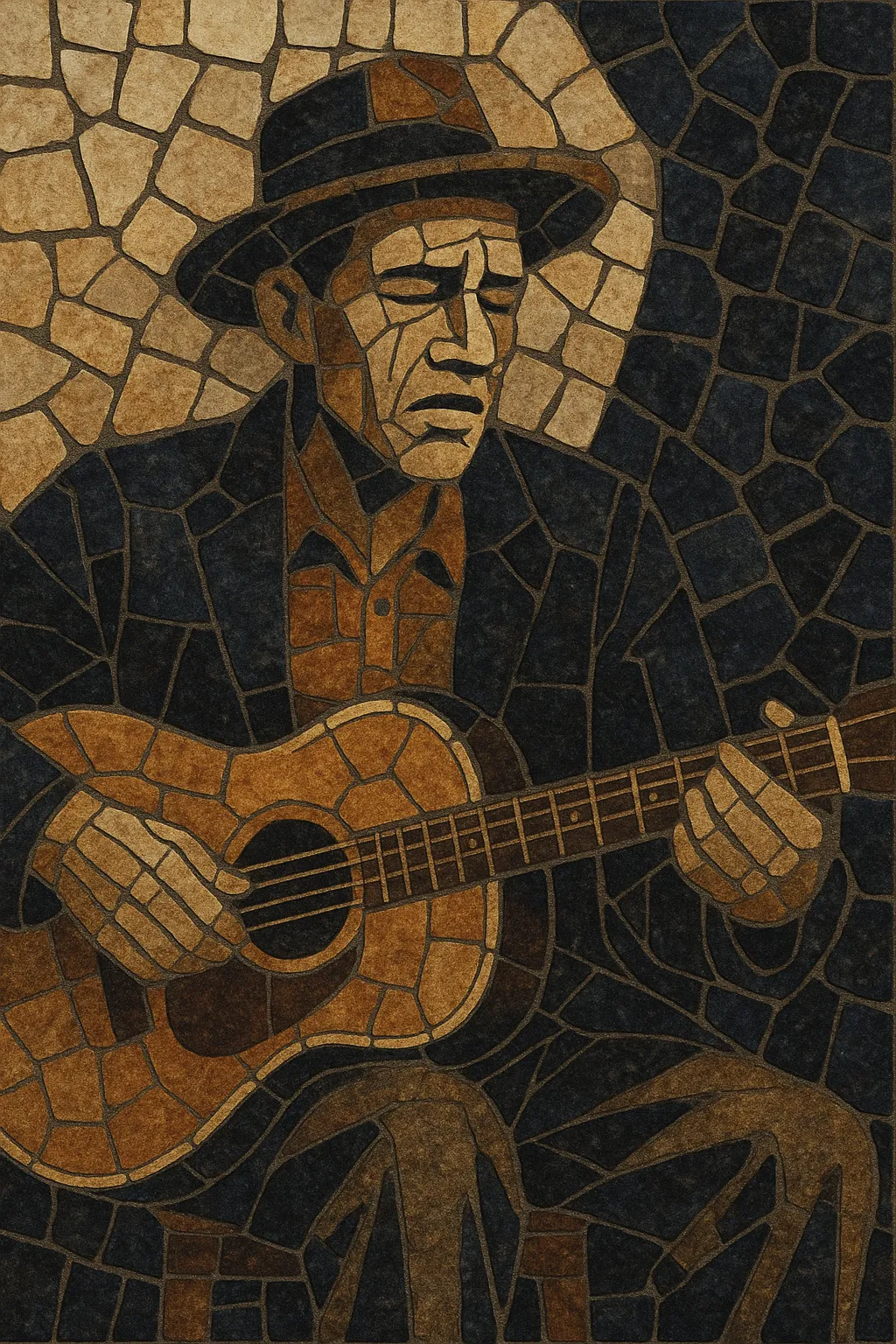
Talking blues is a narrative song form in which the verses are rhythmically spoken rather than fully sung, typically over a steady, simple acoustic guitar blues accompaniment. The delivery leans on timing, humor, and conversational asides, often punctuated by a short sung refrain or a witty tagged last line.
Emerging in the American South in the 1920s, the style was named and codified by South Carolina musician Chris Bouchillon after his 1926 recording "Talking Blues." It later became a favored vehicle for topical commentary and social satire through the folk revival, especially in the hands of Woody Guthrie, Pete Seeger, and Bob Dylan. Its blend of plain‑spoken storytelling, bluesy harmony, and comic timing helped bridge traditional country/folk performance with modern singer‑songwriter and protest traditions.
Talking blues originated in the United States in the 1920s. South Carolina musician Chris Bouchillon is widely credited with naming and popularizing the form with his 1926 recording "Talking Blues." The template fused a blues harmonic base with a spoken, humorous narrative vocal—more closely aligned with front‑porch storytelling and stage patter than with conventional singing.
In the 1930s and 1940s, Woody Guthrie adopted and expanded the form for topical songs such as "Talking Dust Bowl Blues" and "Talking Columbia,” using the style’s dry humor and plain speech to address current events. His friend and collaborator Cisco Houston, as well as Pete Seeger (solo and with the Almanac Singers), helped cement talking blues as a go‑to vehicle for satire, union songs, and social critique. In the early 1960s, Bob Dylan revitalized the idiom for a new audience with pieces like "Talkin’ New York" and "Talkin’ World War III Blues," extending the tradition into the folk revival and beyond.
The talking blues approach—stripped‑down guitar, conversational delivery, punchline tags—became part of the DNA of the singer‑songwriter tradition and a model for protest and comedic narrative songs. Artists such as Phil Ochs, Tom Paxton, Ramblin’ Jack Elliott, and Arlo Guthrie carried it forward. Its emphasis on rhythmic speech over a groove presaged later spoken and rap‑adjacent idioms, while its satirical edge remains a living toolbox for topical folk and acoustic storytellers.

